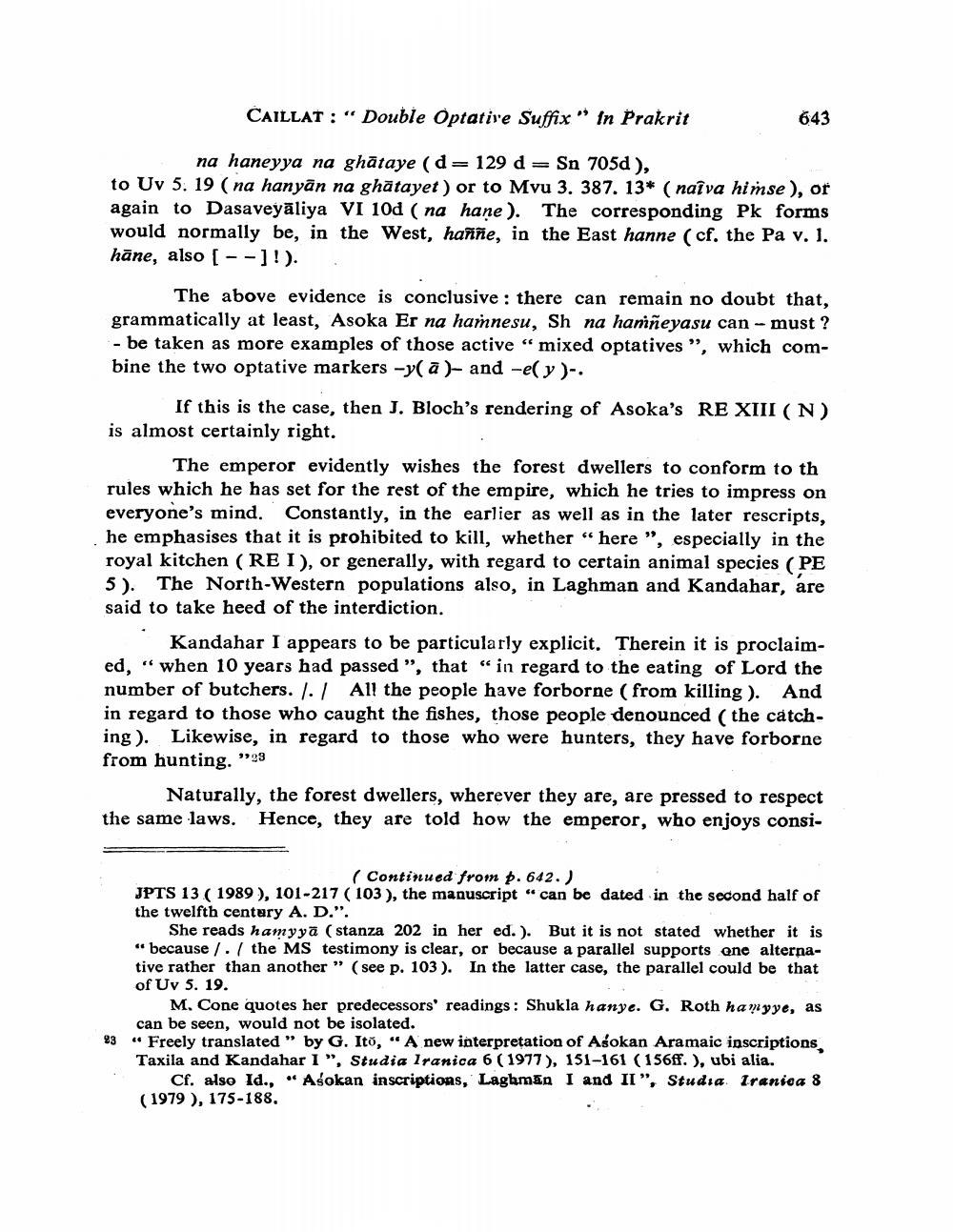Book Title: Double Optative Suffix In Prakrit Asoka XIII Na Hamnesu Na Hamneyasu Author(s): Colette Caillat Publisher: Colette Caillat View full book textPage 7
________________ CAILLAT : " Double Optative Suffix " in Prakrit 643 na haneyya na ghātaye (d=129 d = Sn 705d ), to Uv 5. 19 (na hanyān na ghātayet) or to Mvu 3. 387. 13* (naiva himse), or again to Dasaveyāliya VI 100 ( na hane). The corresponding Pk forms would normally be, in the West, haññe, in the East hanne (cf. the Pa v. 1. hāne, also [--]!). The above evidence is conclusive : there can remain no doubt that, grammatically at least, Asoka Er na hamnesu, Sh na haniñeyasu can - must? - be taken as more examples of those active “mixed optatives", which combine the two optative markers -y(a)- and -el y )-. If this is the case, then J. Bloch's rendering of Asoka's RE XIII (N) is almost certainly right. The emperor evidently wishes the forest dwellers to conform to th rules which he has set for the rest of the empire, which he tries to impress on everyone's mind Constantly, in the earlier as well as in the later rescripts, he emphasises that it is prohibited to kill, whether “here", especially in the royal kitchen (REI), or generally, with regard to certain animal species (PE 5). The North-Western populations also, in Laghman and Kandahar, are said to take heed of the interdiction. Kandahar I appears to be particularly explicit. Therein it is proclaimed, "when 10 years had passed ”, that “in regard to the eating of Lord the number of butchers.. / All the people have forborne (from killing ). And in regard to those who caught the fishes, those people denounced (the catching). Likewise, in regard to those who were hunters, they have forborne from hunting. "29 Naturally, the forest dwellers, wherever they are, are pressed to respect the same laws. Hence, they are told how the emperor, who enjoys consi (Continued from p. 642.) JPTS 13 (1989), 101-217 ( 103 ), the manuscript "can be dated in the second half of the twelfth century A. D.". She reads hamyya ( stanza 202 in her ed.). But it is not stated whether it is “because / ./ the MS testimony is clear, or because a parallel supports one alternative rather than another" (see p. 103). In the latter case, the parallel could be that of Uv 5. 19. M. Cone quotes her predecessors' readings: Shukla hanye. G. Roth hamyye, as can be seen, would not be isolated. 23 " Freely translated by G. Ito, “A new interpretation of Asokan Aramaic inscriptions Taxila and Kandahar 1", Studia Iranica 6 (1977), 151-161 (156ff.), ubi alia. Cf. also Id.. Asokan inscriptions, Laghman I and II”. Studia Iranica 8 (1979), 175-188.Page Navigation
1 ... 5 6 7 8 9
